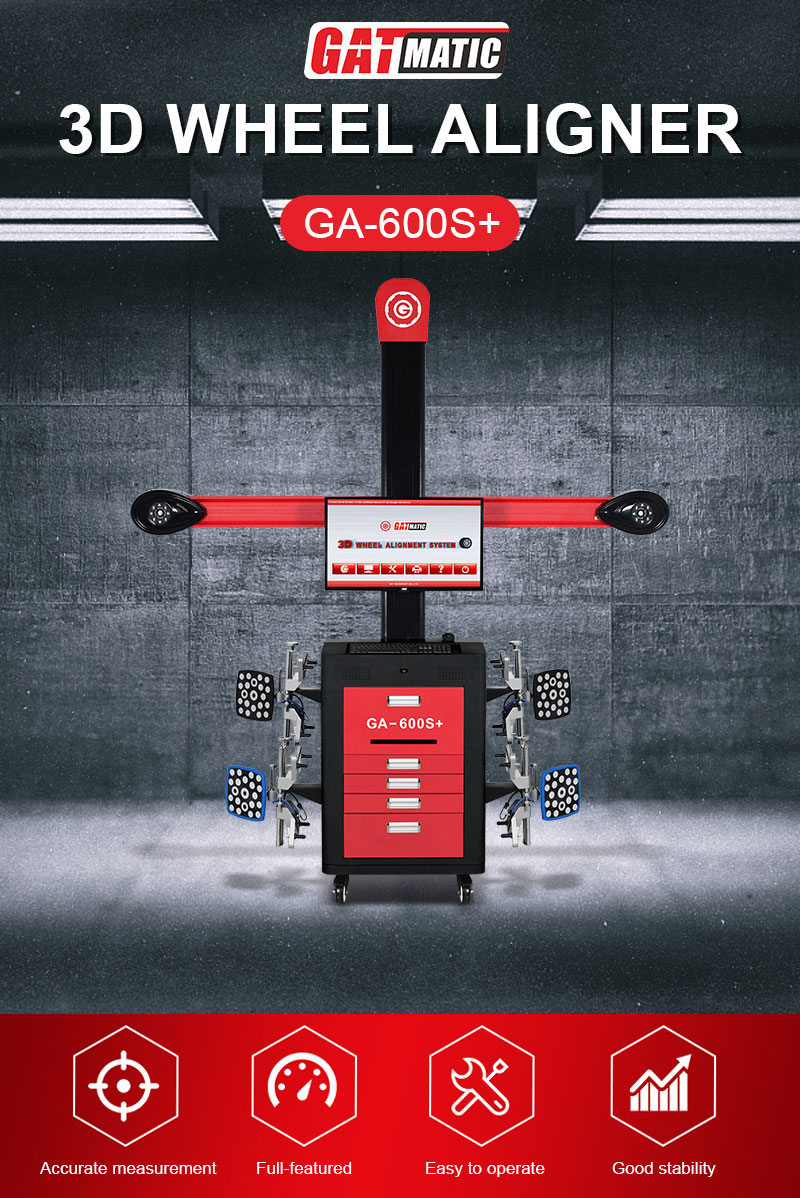Basic Elements of Wheel Alignment
Introduction
Wheel alignment is a critical aspect of vehicle maintenance that ensures the proper alignment of the vehicle’s tires and suspension components. When a vehicle’s wheels are correctly aligned, it not only improves the safety and performance of the car but also contributes to its overall efficiency. In this essay, we will explore the basic elements of wheel alignment, how they affect vehicle performance, and the benefits of regular alignment checks.
I. Key Components of Wheel Alignment
There are four primary elements that make up a vehicle’s wheel alignment: camber, toe, caster, and thrust angle. Each element plays a unique role in ensuring that the vehicle’s wheels are properly oriented to maximize stability, handling, and tire longevity.
- Camber
Camber refers to the angle of the wheel in relation to the vehicle’s body. When viewed from the front, the wheels should ideally be perpendicular to the ground. A positive camber means the top of the wheel tilts outward, while a negative camber means the top of the wheel tilts inward. Excessive camber can cause uneven tire wear. If the camber angle is not adjusted correctly, the inner or outer edges of the tire may wear down faster, reducing the lifespan of the tires. - Toe
Toe refers to the direction in which the tires point relative to each other when viewed from above. If the front of the tires points inward, it is called “toe-in,” and if they point outward, it is called “toe-out.” Toe misalignment can lead to uneven tire wear, poor handling, and reduced fuel efficiency. Proper toe alignment ensures that the tires roll in the most efficient direction. - Caster
Caster is the angle of the steering axis when viewed from the side of the vehicle. It affects the stability of the steering and the vehicle’s ability to return to the center position after turning. A positive caster angle improves straight-line stability, while a negative caster angle can cause steering instability. Proper caster alignment ensures better control and more consistent handling, particularly at higher speeds. - Thrust Angle
The thrust angle refers to the alignment of the rear wheels in relation to the front wheels. The thrust angle is critical because if the rear wheels are misaligned with the front wheels, the vehicle will not drive straight and can pull to one side. Correcting the thrust angle ensures the vehicle moves straight down the road and reduces the chances of uneven tire wear.
II. How Wheel Alignment Affects Vehicle Performance
Proper wheel alignment is essential for several aspects of vehicle performance:
- Tire Wear: Misalignment accelerates tire wear, causing tires to wear unevenly. This leads to frequent tire replacements, which can be costly.
- Fuel Efficiency: Misaligned wheels create extra friction between the tires and the road, causing the engine to work harder to maintain speed. This increases fuel consumption and reduces overall fuel efficiency.
- Handling and Steering: Proper alignment ensures that the vehicle handles smoothly and responds accurately to steering inputs. Misalignment can make the vehicle feel unstable or difficult to steer, especially when driving at high speeds or during turns.
III. Signs of Misalignment
There are several signs that may indicate your vehicle is in need of wheel alignment:
- Uneven Tire Wear: If you notice that the tires are wearing more on one side than the other, it’s a clear sign that the wheels are misaligned.
- Pulling to One Side: A vehicle that constantly pulls to the left or right, even when driving on a straight road, may have misaligned wheels.
- Steering Wheel Vibrations: A vibrating or off-center steering wheel while driving is another common sign of misalignment.
If any of these symptoms appear, it’s important to get your vehicle’s alignment checked by a professional.
IV. How Alignment is Measured
Wheel alignment is measured using specialized equipment, typically in a garage or service center. Modern alignment systems use laser or computerized technology to measure the angles of the wheels and compare them to the manufacturer’s specifications. The process involves adjusting the camber, toe, and caster angles to ensure that the wheels are properly aligned. The thrust angle is checked by comparing the front and rear alignment to ensure that they are in sync.
V. Benefits of Regular Wheel Alignment
Regular wheel alignment provides several benefits for both the vehicle and the driver:
- Extended Tire Life: Proper alignment helps distribute wear evenly across the tire’s surface, extending its lifespan and delaying the need for replacements.
- Improved Vehicle Safety: Misaligned wheels can affect the vehicle’s handling, making it harder to control. Proper alignment ensures that the vehicle remains stable and responsive, especially in emergency situations.
- Enhanced Driving Comfort: A well-aligned vehicle provides smoother handling and a more comfortable ride. Misalignment can cause vibrations and pulling, which can make driving unpleasant.
Conclusion
In conclusion, wheel alignment is a vital maintenance task that directly impacts a vehicle’s performance, safety, and efficiency. By understanding the basic elements of alignment—camber, toe, caster, and thrust angle—and regularly checking for signs of misalignment, drivers can ensure their vehicles remain in optimal condition. Regular wheel alignment not only improves tire longevity and fuel efficiency but also enhances the overall driving experience. For these reasons, it’s important to prioritize wheel alignment as part of routine vehicle maintenance.
FAQs
1. What is wheel alignment, and why is it important?
Wheel alignment is the process of adjusting the angles of a vehicle’s wheels to ensure they are perpendicular to the ground and parallel to each other. Proper alignment helps improve tire life, fuel efficiency, handling, and overall vehicle safety.
2. What are the key components of wheel alignment?
The key components of wheel alignment are:
- Camber: The angle of the wheel in relation to the vehicle.
- Toe: The direction the tires point in relation to each other.
- Caster: The angle of the steering axis.
- Thrust Angle: The alignment of the rear wheels relative to the front wheels.
3. How do I know if my wheels are out of alignment?
Common signs of misalignment include:
- Uneven tire wear (one side of the tire wears more than the other).
- The vehicle pulling to one side while driving.
- Vibrations or an off-center steering wheel.
4. Can I drive my car if it’s out of alignment?
While you can drive a car with misaligned wheels, it’s not advisable. Misalignment can lead to uneven tire wear, poor handling, and decreased fuel efficiency. In the long term, it may also cause damage to your vehicle’s suspension system.
5. How often should I get my wheels aligned?
It is generally recommended to check your vehicle’s alignment once a year or every 12,000 miles (19,000 kilometers). However, if you notice symptoms like uneven tire wear or the vehicle pulling to one side, it’s best to get an alignment check sooner.
6. What causes a car to go out of alignment?
Several factors can cause misalignment, including:
- Hitting a pothole or curb.
- A collision or accident.
- Worn-out suspension components.
- Normal wear and tear over time.
7. How does wheel alignment affect tire wear?
Proper alignment ensures that your tires wear evenly. Misaligned wheels can cause uneven wear, where the inner or outer edges of the tires wear down faster than the rest of the tread, reducing tire lifespan.
Describe Your Needs In Detail!
We will carefully evaluate your needs and give professional solutions.



